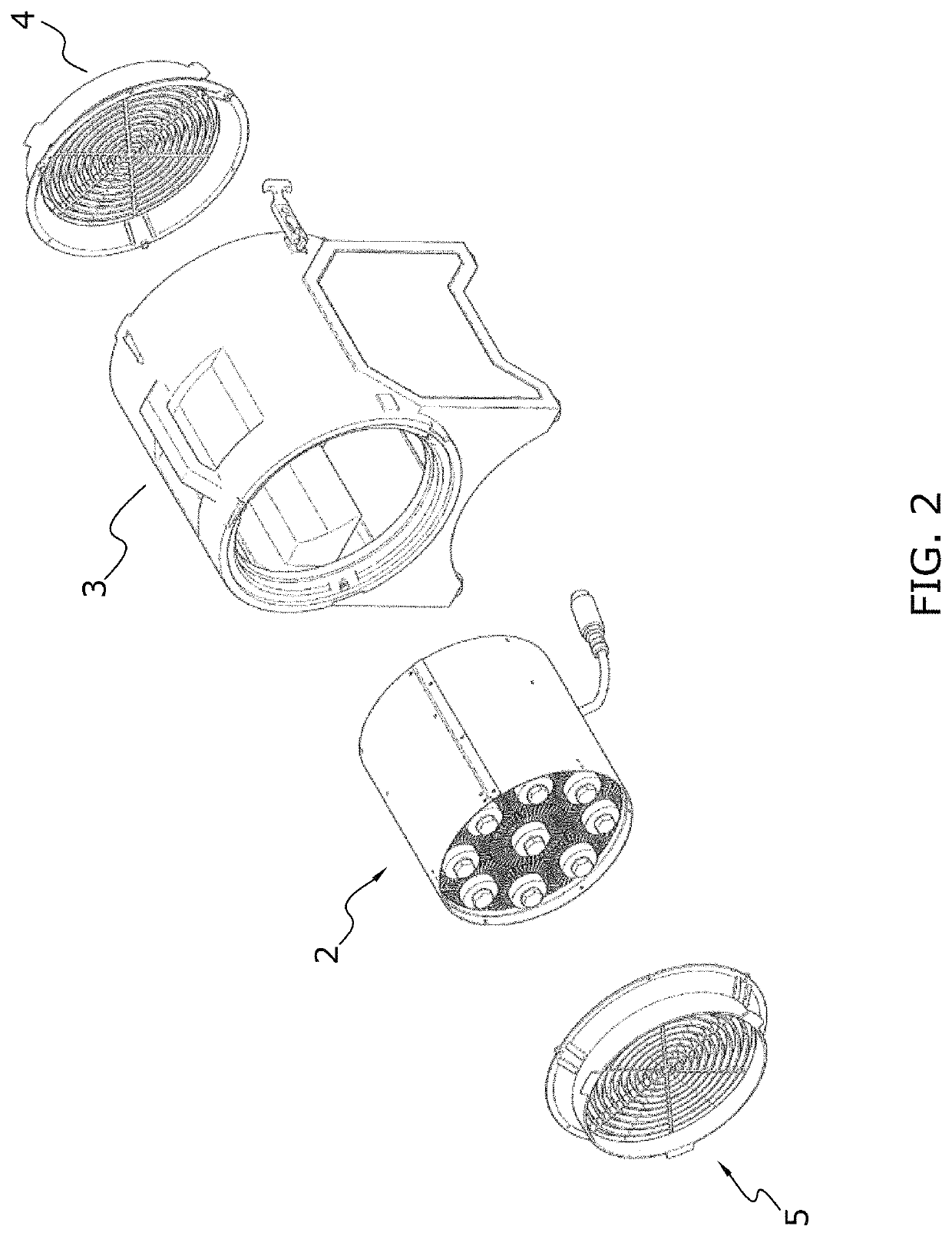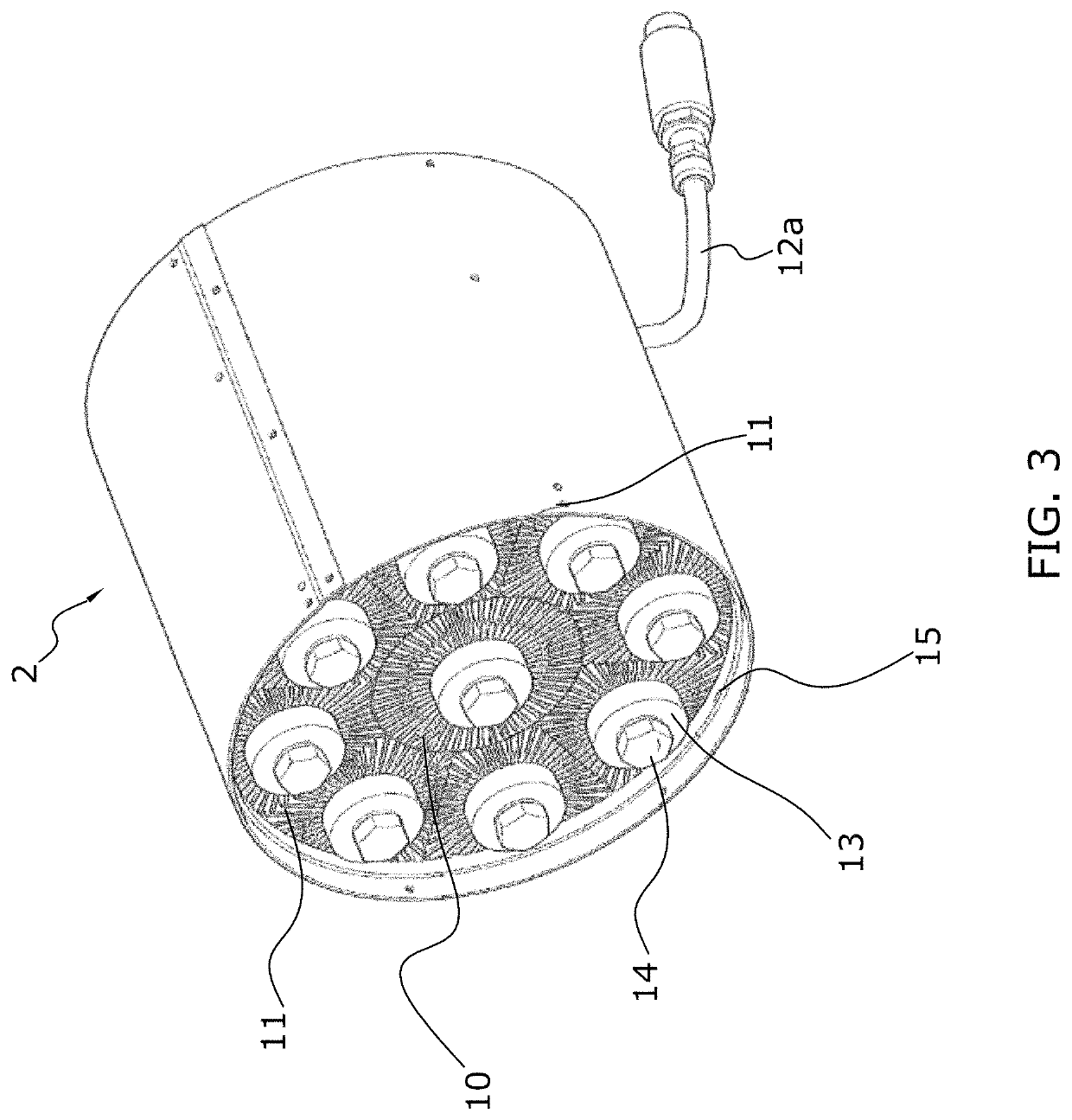Heat exchanger
a technology of heat exchanger and heat exchanger plate, which is applied in the direction of indirect heat exchanger, stationary tubular conduit assembly, light and heating apparatus, etc., can solve the problems of fluid turbulence towards, and achieve the effect of reducing energy consumption, increasing flow rate, and high flow ra
- Summary
- Abstract
- Description
- Claims
- Application Information
AI Technical Summary
Benefits of technology
Problems solved by technology
Method used
Image
Examples
Embodiment Construction
[0045]FIG. 1 illustrates a heat exchanger 1. It facilitates transfer of thermal energy between two or more fluids. The fluids may include liquid, gasses or any combination of liquid and gases. For example, the fluids may include air, exhaust, oil, coolant, water or any other fluid known in the art. The heat exchanger may be used to transfer thermal energy in any fluid systems, such as for example, an exhaust and / or air cooling system, a radiator system, an oil cooling system, a condenser system or any other type of fluid system known in the art.
[0046]FIG. 2 shows a partially exploded, elevated view of the heat exchanger according to one embodiment of the invention. The heat exchanger 1 comprising a housing 3. This housing 3 is shown cylindrically shaped but it could also have other shapes, like a rectangular shape.
[0047]A heat exchanger 2 according to the embodiment of the invention is arranged within the housing 3. At both ends of the housing 3, there are arranged lattices 4, 5 to ...
PUM
 Login to View More
Login to View More Abstract
Description
Claims
Application Information
 Login to View More
Login to View More - R&D
- Intellectual Property
- Life Sciences
- Materials
- Tech Scout
- Unparalleled Data Quality
- Higher Quality Content
- 60% Fewer Hallucinations
Browse by: Latest US Patents, China's latest patents, Technical Efficacy Thesaurus, Application Domain, Technology Topic, Popular Technical Reports.
© 2025 PatSnap. All rights reserved.Legal|Privacy policy|Modern Slavery Act Transparency Statement|Sitemap|About US| Contact US: help@patsnap.com



